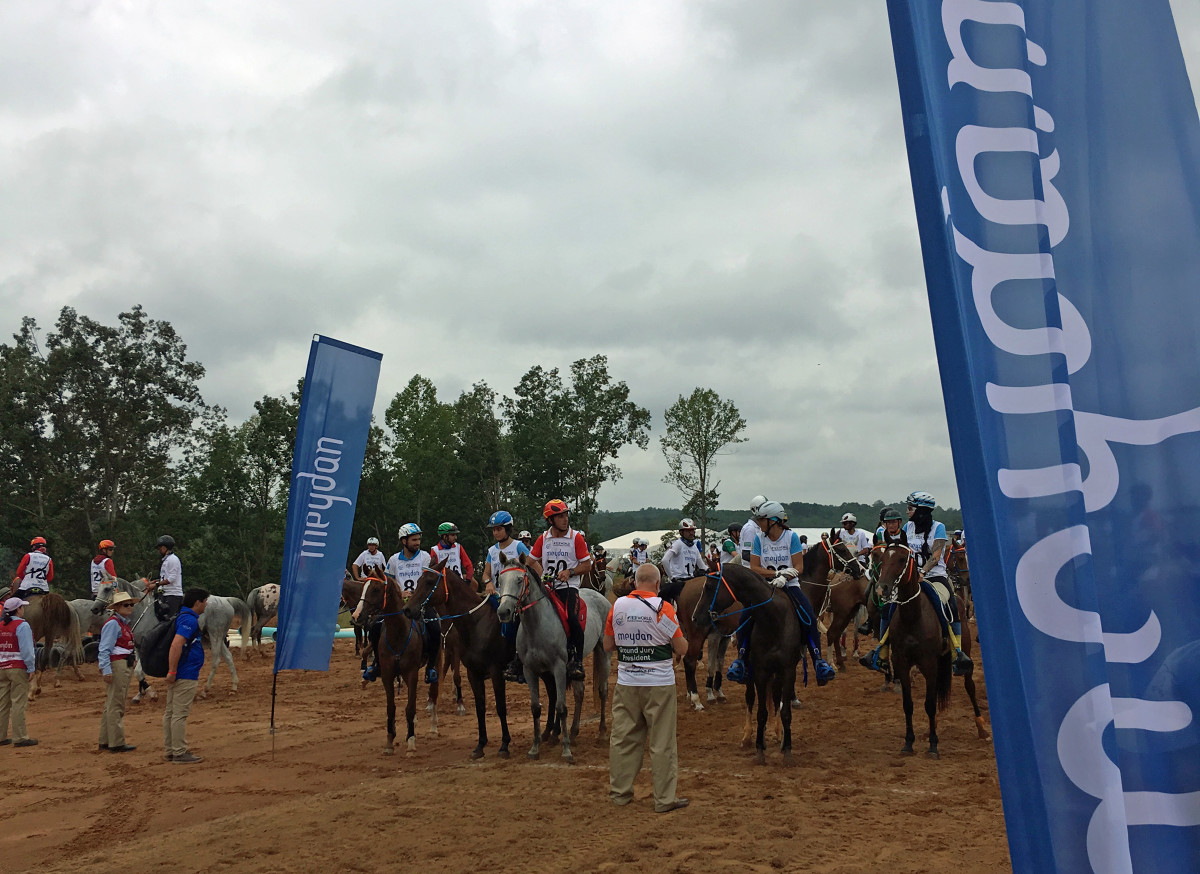
At elite levels of FEI (Federation Equestrian International) competition, it is not uncommon to see nearly half the field eliminated from competition for failure to meet metabolic and/or soundness criteria. A study evaluated the effect of pace between finishers and non-finishers [Marlin, D., and Williams, J. Equine endurance race pacing strategy differs between finishers and non-finishers in 120 km single-day races, Comparative Exercise Physiology in press 2018].
As endurance riding becomes more popular throughout the United States and internationally, understanding the dynamics of the effect of speed on completion rates can help equine veterinarians counsel their endurance clients. Providing riders with data enables them to make strategic decisions to keep their horses safe while successfully completing competitions.
The study evaluated competition records for 389 horses in 24 races of 75-mile distances in 2016-2017. Of these equine athletes, 56% completed successfully while 44% did not. Nearly three-quarters of the non-completions were disqualified for lameness and gait abnormalities. A broader 2014 review of 30,741 FEI races in 47 countries identified that 30% of non-completions were for lameness and 9% for metabolic issues. Race level of CEI, terrain, fitness, distance and speed have an impact on how much competitors are willing to push their horses.
The study identified several key components to the effects of speed:
- Successful finishers were 7% slower than horses that failed to complete the competition.
- Horses that failed to complete the race traveled Loop 1 at faster speeds (by 5%) than those horses that completed the race. However, the fast Loop 1 horses completed subsequent loops at slower speeds than those horses that did complete.
- Of four loops in the competitions, loop speed decreased sequentially for all horses as they progressed through the loops. Those horses that did not complete had a greater rate of decreased speed through sequential loops.
- Horses eliminated at the first veterinary check for lameness traveled 36% faster than horses withdrawn for lameness at the finish veterinary check.
- Horses eliminated due to metabolic reasons at the finish traveled at a significantly increased speed (by 7%) in the final loop.
In general, the study concluded: “Riders who adopted a more consistent pacing strategy were less likely to be eliminated for metabolic or lameness-related problems.” Of particular importance is the speed traveled on Loop 1.
Of further importance to success in endurance racing is the act of rider recordkeeping of their horses’ training regimens—only 53% of riders that were surveyed said they monitor training and keep records. Recordkeeping enables a rider to systematically observe his/her horse and to modify training and competition speeds according to how well the horse is coping with demands of the trail.








